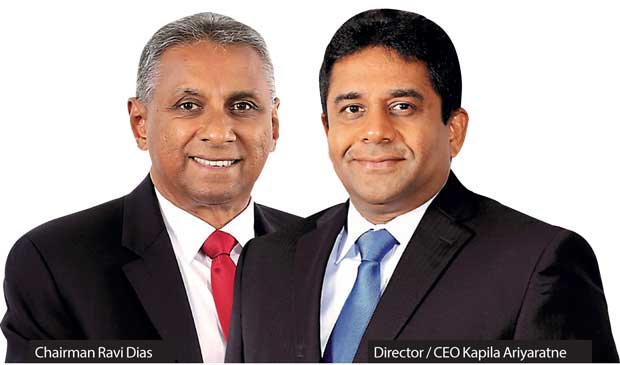Reply To:
Name - Reply Comment

A modest growth in loans and judicious portfolio management appear to have helped Seylan Bank PLC to post relatively better performance in the September (3Q17) quarter, the interim financial accounts filed with the Colombo Stock Exchange showed.
According to the interim results released last week, the mid-sized lender reported earnings of Rs.3.45 a share or Rs.1.22 billion, an increase of 13 percent over the same period last year.
Seylan Bank, which inherited sour asset base due to previous bad management nearly a decade ago, has been able to gradually recover from it and is currently competing neck and neck with the bigger players in the industry.
The bank which was turned around from the brink of collapse in 2008 is a benchmark case study now taught in both local and international business schools.
The bank gradually has brought down its gross non-performing loan ratio to 4.67 percent by end of September from double digit levels a decade ago.
Although it remains about 177 basis points higher than the industry average, the NPL is comparatively better and Seylan is now on its second 5-year strategic plan, which will see the bank trimming down its bad loans further down to below 2.0 percent.
“These results were impacted by provisions made on account of a legacy NPA, payment of which is due from the composition tribunal”, the bank said in an earnings release.
The bank with an asset base of Rs.381 billion expanded its loan book by just under Rs.20 billion registering a growth of 8.2 percent—low on recent historical standards, yet healthier and a sustainable percentage given the present tighter monetary conditions.
The bank now has a total loan portfolio of Rs.261.9 billion.
Meanwhile, the deposits grew by a strong Rs.22.5 billion registering a similar growth percentage to that of loans and receivables.
However, the low cost deposits or the current and savings deposits as a percentage of total deposits fell to 30.6 percent from 32.5 percent at the beginning of the year, “due to funds moving in to higher yielding fixed deposits”. The bank’s deposit now stands at Rs.296 billion.
The net interest income— the gap between the cost of deposits and other funding sources and the income from loans and other investments—was up 19.22 percent to Rs. 4.14 billion for the quarter from a year earlier.
The bank was seen maintaining its net interest margin at 4.11 percent.
The bank in August announced Rs.10 billion subordinated debenture issue, convertible at a future date when the need arises to drum up equity to meet BASEL III capital requirements.
Meanwhile, for the 9 months ended September 30, 2017, the bank reported earnings of Rs.3.36 billion or Rs.9.58 a share, an increase of 19.39 percent compared to the corresponding period of the previous year.
As of September 30, the government held little over 32 percent stake in Seylan Bank through Sri Lanka Insurance Corporation, Employees’ Provident Fund and Bank of Ceylon.
Ishara Nanayakkara-controlled Brown & Company PLC and LOLC Investments Limited together held 22.59 percent stake in the bank.